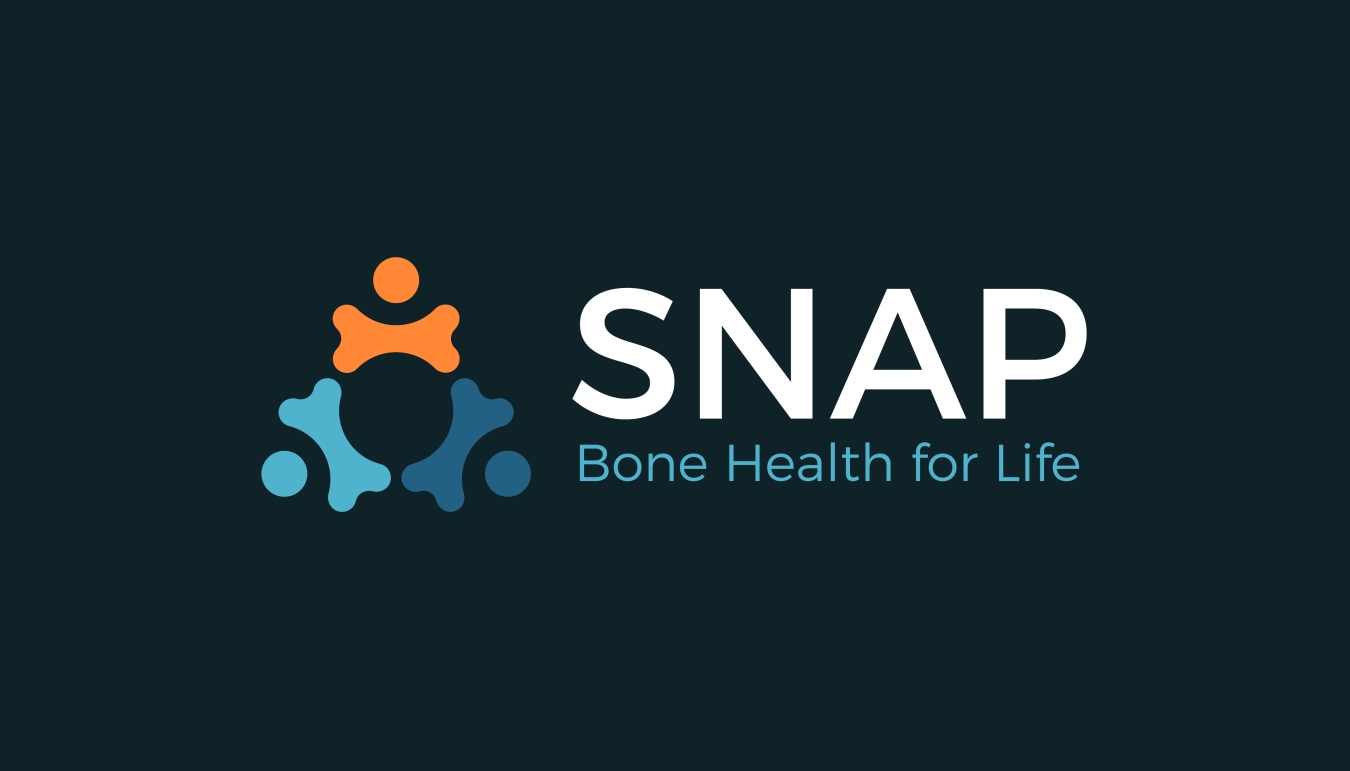Bone Health and Aging: How to Keep Your Bones Strong as You Get Older
- byAdmin
- 27 August, 2024
- 20 Mins

As we age, maintaining good bone health becomes increasingly important. Bones play a pivotal role in the body, providing structure, protecting vital organs, and storing important minerals such as calcium. Bones are reinforced with minerals during the early years of life, continuing until about 30 years of age, when peak bone mass is achieved. If adequate bone mass is not built during this period, or if there is age-related bone loss later in life, the bones may become fragile and susceptible to fractures.1 However, certain lifestyle and dietary habits can be adopted to maintain bone density and keep the bones strong as we get older.
The Importance of Bone Health in Aging
Bone health is an important component of overall well-being. Throughout life, bones are in a constant state of renewal, with old bone tissue being replaced by new bone tissue. This process, known as bone remodelling, is essential for maintaining bone strength and integrity.
During childhood and adolescence, bone formation typically outpaces bone resorption, leading to a gradual increase in bone mass. However, as we reach our early to mid-30s, bone resorption begins to exceed bone formation, resulting in a gradual decline in bone density. This natural ageing process can lead to a condition known as osteopenia, which is characterized by low bone density, and ultimately, osteoporosis, a more severe condition marked by brittle and fragile bones.
Osteoporosis is an important health concern among the elderly, as it significantly increases the risk of fractures, especially in the hip, spine, and wrist. The risk is even higher among women, as female bones are generally smaller and less dense than those of their male counterparts. According to the Bone Health & Osteoporosis Foundation, one in two women and one in four men will break a bone in their lifetime due to osteoporosis. For women, the risk is greater than that of heart attack, stroke and breast cancer combined.2 The risk further increases at menopause when the levels of a bone-strengthening hormone 'estrogen' fall. The resulting fractures can have debilitating consequences, such as loss of mobility, chronic pain, and a decreased quality of life. Therefore, taking proactive steps to maintain and improve bone health as you age is essential for a healthy and active lifestyle.
During childhood and adolescence, bone formation typically outpaces bone resorption, leading to a gradual increase in bone mass. However, as we reach our early to mid-30s, bone resorption begins to exceed bone formation, resulting in a gradual decline in bone density.
Factors Influencing Bone Health
Several factors contribute to the health and strength of our bones, including genetics, nutrition, physical activity, and hormonal changes. Understanding these factors is crucial for developing a comprehensive approach to bone health as we age.
- Genetics: Genetic factors play a role in determining our peak bone mass and how our bones age. While we cannot change our genetics, knowing our family history of bone health issues can help us make informed decisions and seek early intervention if necessary.3
- Nutrition: Proper nutrition is essential for maintaining bone health. Calcium and vitamin D are two of the most critical nutrients for bone strength. Calcium is the primary mineral in bones, while vitamin D helps the body absorb calcium. A balanced diet that includes dairy products, leafy greens, fortified foods, and supplements, when necessary, can help meet these nutritional needs.
- Physical Activity: Weight-bearing and resistance exercises are vital for stimulating bone formation and maintaining bone density. Regular physical activity, such as walking, jogging, weightlifting, and yoga, can help strengthen bones and reduce the risk of fractures.4
- Hormonal Changes: Hormonal changes that occur during menopause and ageing can affect bone health. In women, estrogen levels drop significantly after menopause, leading to accelerated bone loss.
- Lifestyle Factors: Smoking and excessive alcohol consumption can negatively impact bone health. Smoking reduces blood flow to the bones and decreases bone density, while excessive alcohol interferes with the body's ability to absorb calcium.5
Maintaining Strong Bones as You Age
Now that we've explored the importance of bone health and the factors influencing it, let's discuss practical steps you can take to keep your bones strong as you get older.
- Eat a Balanced Diet:
- The best source of calcium is food. Ensure an adequate intake of calcium-rich foods like dairy products, tofu, almonds, and leafy greens. The recommended daily allowance (RDA) of calcium is 1,200 mg for women over 50 years of age to lessen bone loss after menopause, while younger women and men over 50 are advised an intake of 1,000 mg daily.6 It is important to divide your calcium intake throughout the day as it is absorbed best when taken in quantities of 500mg or less at one time.7
- Vitamin D deficiency is common with over one billion people affected by it worldwide.8 The recommended blood levels of Vitamin D are at least 30 ng/ml (75 nmol/l) to ensure protection against osteopenia, osteoporosis and other bone diseases.9 Prioritise sun exposure especially early in the morning and include vitamin D sources in your diet, such as fatty fish, fortified foods, and supplements if recommended by your healthcare provider.
- Consume foods rich in other bone-boosting nutrients, such as magnesium, phosphorus, and vitamin K. Magnesium promotes bone health by activating vitamin D and improving calcium absorption.10 Likewise, Vitamin K2 enhances bone health due to its modifying effects on osteocalcin, a protein involved in bone formation. This allows osteocalcin to adhere to bone minerals and prevent calcium loss.11
- Ensure adequate zinc intake by incorporating good zinc sources in the diet such as beef, spinach, shrimp, oysters, flaxseeds and pumpkin seeds. Although zinc is a trace mineral required in very small amounts, its deficiency is not rare. Zinc helps build bone while keeping its breakdown minimal.12
- Engage in Weight-Bearing Exercises:
- Incorporate weight-bearing exercises that promote bone formation like walking, hiking, dancing, and stair climbing into your routine.
- Include resistance exercises, such as weightlifting or bodyweight exercises, to further strengthen bones.13
- Studies involving older adults who engaged in weight-bearing exercises show promising results. Not only there was an increase in bone density and strength, but the bone size was also found to increase. Additionally, there was a reduction in bone turnover and inflammation, highlighting the benefits of staying active, especially with exercises that put a bit of weight on bones.14,15
- Ensure Adequate Protein Intake:
- Sufficient protein intake is important for bone health since about 50% of bone is made up of a protein, called collagen. Research indicates that low protein intake not only reduces bone formation but also calcium absorption.16 It is recommended to consume 100 grams of protein daily, balanced with plant food sources and calcium intake.17
- Older women can benefit from higher protein consumption in particular as it has been found that higher protein consumption in women is associated with better bone density.18
- Maintain a Healthy Lifestyle:
- Quit smoking if you smoke, as it can weaken bones and increase the risk of fractures.
- Limit alcohol consumption to moderate levels (if you choose to drink), as excessive alcohol can harm bone health.5
- Prevent Falls:
- Make your living space safe by removing tripping hazards and installing handrails and grab bars where needed.
- Consider balance exercises, such as tai chi that can be particularly beneficial for the elderly, to improve stability and reduce the risk of falls.
- Regular Bone Density Testing:
- Talk to your healthcare provider about bone density testing (DXA scans) to assess your bone health and determine if you have osteoporosis or osteopenia. It is recommended for all women aged 65 and above and men aged 70 and above. Regular screening can ensure timely intervention as osteoporosis often progresses silently.
- Follow your healthcare provider's recommendations for bone-strengthening medications or supplements if necessary.
- Hormone Replacement Therapy (HRT):
- Hormone replacement therapy can benefit postmenopausal women, who are at an increased risk of bone loss.19
References
- NIH Osteoporosis and Related Bone Diseases National Resource Center. Bone Health for Life: Health Information Basics for You and Your Family. Available from: https://www.bones.nih.gov/health-info/bone/bone-health
- Bone Health & Osteoporosis Foundation. What Women Need to Know. Available from: https://www.bonehealthandosteoporosis.org/patients/what-women-need-to-know/
- Ralston, S. H., & Uitterlinden, A. G. (2010). Genetics of osteoporosis. Endocrine reviews, 31(5), 629-662.
- Watson, S. L., Weeks, B. K., Weis, L. J., Harding, A. T., Horan, S. A., & Beck, B. R. (2015). High-intensity exercise attenuates bone mineral density loss during menopause: a randomized controlled trial. Journal of bone and mineral research, 30(1), 205-213.
- Kanis, J. A., Johansson, H., Odén, A., & McCloskey, E. V. (2013). The effects of smoking on fracture risk: a meta-analysis. Osteoporosis International, 24(5), 1553-1561.
- Office of Dietary Supplements. Calcium: Fact sheet for health professionals. National Institutes of Health. Available from https://ods.od.nih.gov/factsheets/Calcium-HealthProfessional/
- National Institute on Aging. Calcium and Vitamin D: Important at Every Age. Available from https://www.nia.nih.gov/health/calcium-and-vitamin-d-important-every-age
- Hilger, J., Friedel, A., Herr, R., Rausch, T., Roos, F., Wahl, D. A., ... & Hoffmann, K. (2014). A systematic review of vitamin D status in populations worldwide. British Journal of Nutrition, 111(1), 23-45.
- Holick, M. F. (2007). Vitamin D deficiency. New England Journal of Medicine, 357(3), 266-281.
- Zhao, Y., Sun, H., Wang, Y., & Wang, L. (2022). The role of magnesium in bone health: a review. Nutrition Research Reviews, 35(1), 80-89.
- Rizzoli, R., Reginster, J. Y., Arnal, J. F., Bautmans, I., Beaudart, C., Bischoff-Ferrari, H., ... & Kanis, J. A. (2014). Quality of life in sarcopenia and frailty. Calcified tissue international, 93(2), 101-120.
- Hyun, T. H., Barrett-Connor, E., & Milne, D. B. (2004). Zinc intakes and plasma concentrations in men with osteoporosis: the Rancho Bernardo Study. The American journal of clinical nutrition, 80(3), 715-721.
- Kohrt, W. M., Bloomfield, S. A., Little, K. D., Nelson, M. E., & Yingling, V. R. (2004). Physical activity and bone health. Medicine and science in sports and exercise, 36(11), 1985-1996.
- Beck, B. R., Daly, R. M., Singh, M. A. F., & Taaffe, D. R. (2017). Exercise and Sports Science Australia (ESSA) position statement on exercise prescription for the prevention and management of osteoporosis. Journal of science and medicine in sport, 20(5), 438-445.
- Howe, T. E., Shea, B., Dawson, L. J., Downie, F., Murray, A., Ross, C., ... & Creed, G. (2011). Exercise for preventing and treating osteoporosis in postmenopausal women. Cochrane Database of Systematic Reviews, (7).
- Bonjour, J. P., Guéguen, L., Palacios, C., Shearer, M. J., & Weaver, C. M. (2009). Minerals and vitamins in bone health: the potential value of dietary enhancement. British Journal of Nutrition, 101(11), 1581-1596.
- Rizzoli, R., Stevenson, J. C., Bauer, J. M., van Loon, L. J., Walrand, S., Kanis, J. A., ... & Boirie, Y. (2014). The role of dietary protein and vitamin D in maintaining musculoskeletal health in postmenopausal women: a consensus statement from the European Society for Clinical and Economic Aspects of Osteoporosis and Osteoarthritis (ESCEO). Maturitas, 79(1), 122-132.
- Rapuri, P. B., Gallagher, J. C., & Haynatzki, G. (2007). Protein intake: effects on bone mineral density and the rate of bone loss in elderly women. The American journal of clinical nutrition, 85(3), 861-869.
- Lindsay, R., Gallagher, J. C., Kleerekoper, M., & Pickar, J. H. (2002). Effect of lower doses of conjugated equine estrogens with and without medroxyprogesterone acetate on bone in ea


